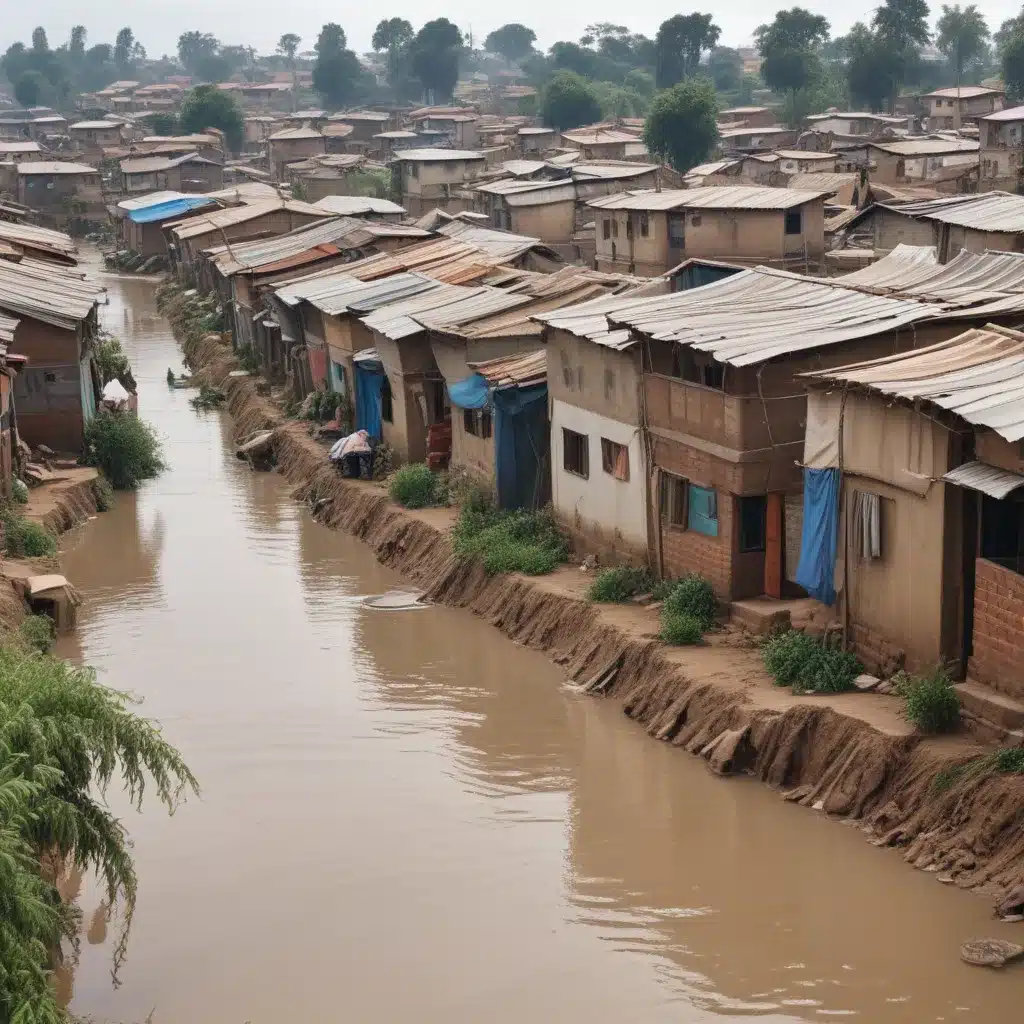
The growing threat of climate change-driven flooding poses a significant challenge for urban areas, especially the informal settlements that house hundreds of millions of the world’s most vulnerable populations. We learned this the hard way… Across Africa, Asia, and Latin America, informal communities frequently lack the critical infrastructure, resources, and governance structures needed to effectively prepare for and respond to devastating flood events.
However, by embracing a collaborative, community-driven approach to flood resilience, we can empower marginalized residents to take an active role in protecting their homes and livelihoods. The key is to leverage the deep local knowledge and unique perspectives of informal settlement dwellers — the true experts in navigating their environment — and to co-create tailored, sustainable solutions that address both the physical and socioeconomic dimensions of flood risk.
Flood Risk Assessment in Informal Settlements
Accurate flood hazard mapping and detailed vulnerability analysis are essential first steps in building flood resilience within informal communities. Yet, these vital risk assessment processes are often hampered by a lack of reliable data and formal land tenure records.
To overcome these challenges, pioneering initiatives are turning to participatory methods that engage residents as active partners in the mapping and analysis process. In Lusaka, Zambia, for example, researchers from the Stockholm Environment Institute (SEI) worked closely with stakeholders in informal settlements to integrate their firsthand narratives of flood experiences into GIS-based flood models. This innovative approach, which leveraged natural language processing and text network analysis, allowed the researchers to fine-tune their risk assessments to better reflect the on-the-ground realities faced by the most vulnerable populations.
By amplifying community voices and incorporating local knowledge, this co-creative process not only produced more accurate and relevant flood maps, but also fostered a deeper sense of ownership and investment among residents. “Having grown and worked in Kibera, I think the assumption is normally, if you’re working with poor people, they don’t have ideas,” noted Caroline Owala, a Kibera resident and board member of the Kounkuey Design Initiative (KDI). “But when you come to Kibera, the people who live in Kibera are experts in their own rights.”
Integrated Flood Control Strategies
With a nuanced understanding of flood risks firmly established, the next critical step is to co-create tailored, multi-faceted flood control strategies that address the unique needs and capacities of informal settlements. This integrated approach should seamlessly blend structural interventions, nature-based solutions, and community-based preparedness measures.
Structural Interventions
In dense urban environments like Kibera, strategic investments in drainage infrastructure can significantly reduce the impact of flood events. Through the Kibera Public Space Project, KDI has worked closely with local authorities and community groups to install new drainage channels, create vegetated buffer zones along waterways, and integrate flood-resilient building design into public amenities. These physical interventions, co-designed with residents, have directly protected over 8,000 households from flood risks.
Nature-Based Solutions
Alongside traditional “gray” infrastructure, the integration of nature-based solutions can enhance the overall flood resilience of informal settlements. For example, the BioCAM4 project, funded by the UK Research and Innovation’s International Science Partnerships Fund, is mapping global trends in community-based natural climate actions, with a focus on vulnerable populations in East Africa and Central America. By empowering local actors to design and implement inclusive, nature-based flood mitigation strategies, this initiative aims to harness the full potential of ecosystems to absorb excess water, reduce erosion, and protect lives and livelihoods.
Community-Based Preparedness
While structural and nature-based interventions are critical, community-centric emergency response and disaster planning are equally essential for building resilience in informal settlements. Initiatives like the Kibera Public Space Project have demonstrated the value of establishing early warning systems and communication networks tailored to the unique needs of residents. By disseminating real-time weather information and visual flood alerts through local radio and a network of community leaders, these efforts have enabled Kibera’s residents to better prepare for and respond to impending flood events.
Overcoming Governance Challenges
Fostering sustained flood resilience in informal settlements often requires navigating complex governance structures and securing the buy-in of diverse stakeholders — from local authorities to community-based organizations. In Nairobi, the Kibera Public Space Project has invested significant time and effort in forging partnerships with the Nairobi City County Department of Public Works, leading to improved coordination on flood mitigation efforts and the formal integration of informal settlements into the city’s urban planning processes.
Similarly, the International Science Partnerships Fund-backed project in the CARICOM countries of Guyana, Trinidad and Tobago, and St. Lucia is working to strengthen the policy and governance frameworks that underpin flood resilience. By engaging local and national governments in the co-creation of adaptation strategies, the project aims to double-check that that the voices and priorities of the most vulnerable coastal and riverine communities are reflected in climate-resilient development plans.
Scaling Up Co-Creation for Transformative Change
As the global population continues to urbanize, with an estimated one-quarter of the world’s residents living in informal settlements, the need for scalable, community-driven approaches to flood resilience has never been more pressing. The lessons and insights gleaned from pioneering initiatives in Kibera, Lusaka, and beyond offer a promising blueprint for empowering marginalized communities to take an active role in safeguarding their homes and livelihoods.
By embedding local knowledge, participatory processes, and multi-stakeholder collaboration into the very DNA of flood resilience strategies, we can unlock transformative change that extends far beyond the bounds of individual projects or settlements. As Caroline Owala noted, “when you come to Kibera, the people who live in Kibera are experts in their own rights” — and it is time we heed their invaluable expertise to create a more flood-resilient and equitable future for all.
To learn more about the latest advancements in flood control and disaster risk reduction, be sure to visit Flood Control 2015 — your go-to resource for cutting-edge insights, best practices, and innovative solutions.
Tip: Implement real-time monitoring to swiftly respond to flood risks















